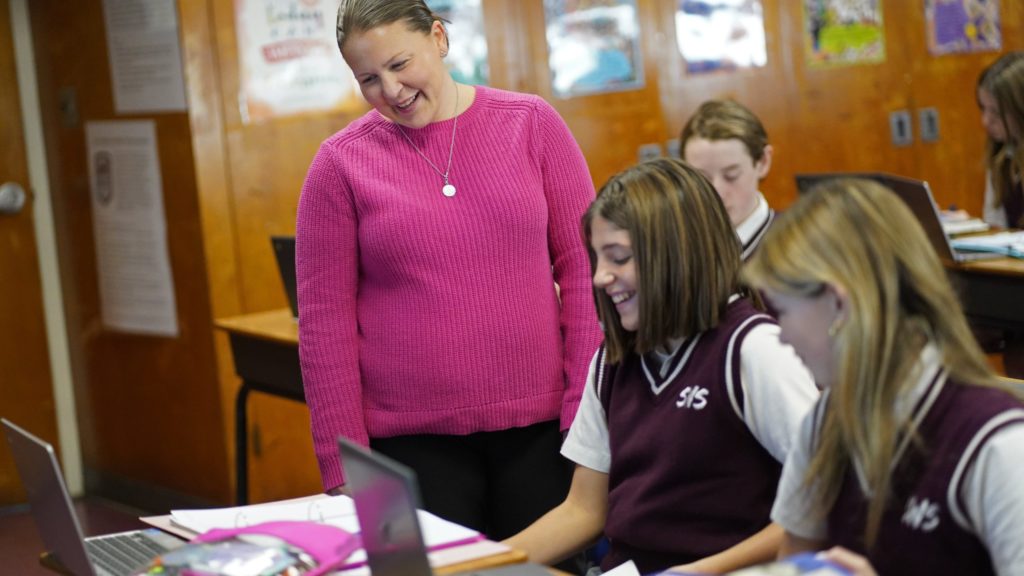Following three years of modest growth, enrollment in Catholic education has remained stable since 2023, according to new data made public Wednesday by the National Catholic Educational Association (NCEA).
The NCEA, which gathers statistics on Catholic school enrollment in the United States each year, reported that enrollment remained steady with a 0.0% change in enrollment from 2022-2023 to 2023-2024.
Following two straight years of notable growth, Catholic school enrollment had again risen slightly nationwide in 2022-2023.
“Although the national enrollment decline since 2013-2014 school year has been 281,251, a 14.2% loss of the student population, enrollment in more recent years has stabilized,” the report read.
Of the 5,905 Catholic schools in the U.S., enrollment in the southeast region of the U.S. has experienced the highest enrollment growth since the 2019-2020 school year, at a 3.6% increase, while the Great Lakes, West, and Far West regions account for almost half of the Catholic school population.
Catholic school closures — averaging about 130 closures a year since the early 2000s according to NCEA data shared with CNA in an email — have been lower in the past two school years. Only 55 schools closed or consolidated in the 2023-2024 school year, while 44 closed in 2022-2023. Meanwhile, 20 new Catholic schools have opened, and 38% of Catholic schools have a waiting list.
Following record expansion of state “school choice” programs in 2023, the NCEA found that 13.7% of Catholic school students use school choice programs to help them attend Catholic school.
In four states — Ohio, Florida, Indiana, and Arizona — more than half of Catholic school students are using a school choice program.
Those programs “offer families the ability to choose Catholic schools” by helping parents finance tuition and other educational expenses through programs including state educational savings accounts, tax credit scholarships, and private school vouchers.
“Catholic schools should advocate for the expansion of these programs, enhance awareness among families, and tailor their educational offerings to attract and retain students benefiting from school choice, ensuring access to Catholic education for a broader demographic,” the report noted.
The NCEA also found an increase in the amount of students with diagnosed disabilities to 7.8%, from the previous year’s 6.9%, which “reflects a growing recognition and accommodation within Catholic schools.”
“The inclusion and support of students with disabilities are indicative of the Catholic education system’s commitment to serving all children,” the report noted.
Catholic schools in the southeast had the highest percentage of students with diagnosed disabilities, at more than 11%, the NCEA found.
In addition to disability accommodations, 129 Catholic schools featured dual-language immersion programs designed to teach students in both their native and second languages in order to promote bilingual students.
Nineteen percent of Catholic school students are Hispanic or Latino, which the NCEA noted “reflects broader demographic shifts in the United States and the Catholic education system’s response to these changes.”
The NCEA also found an increasing trend of non-Catholic students enrolling in Catholic schools, making up 21% of Catholic school students, which, the report noted, presents both “opportunities and challenges.”
Meanwhile, 16% of faculty are non-Catholic, and 12% have not reported a religious affiliation.
While the majority of elementary schools remain parish-sponsored, the NCEA found “notable growth” in elementary diocesan schools, from 2.4% in 1990 to 18% in 2023, “signaling a trend towards consolidation and centralized management within dioceses.”

